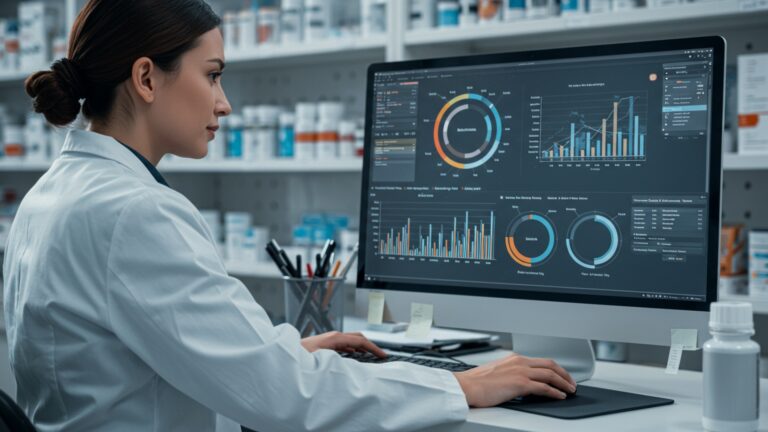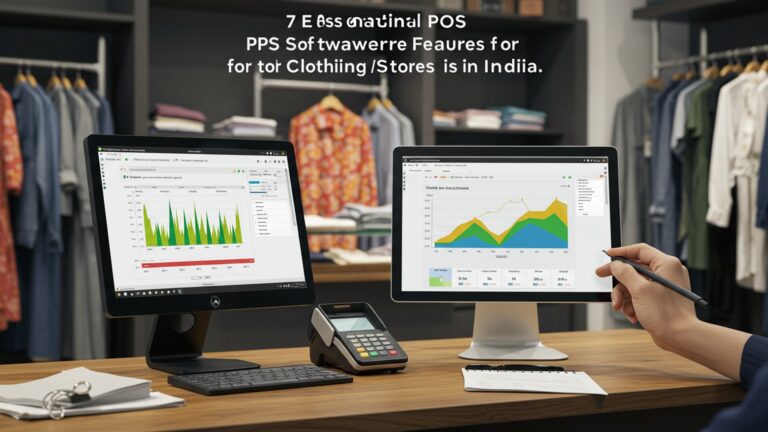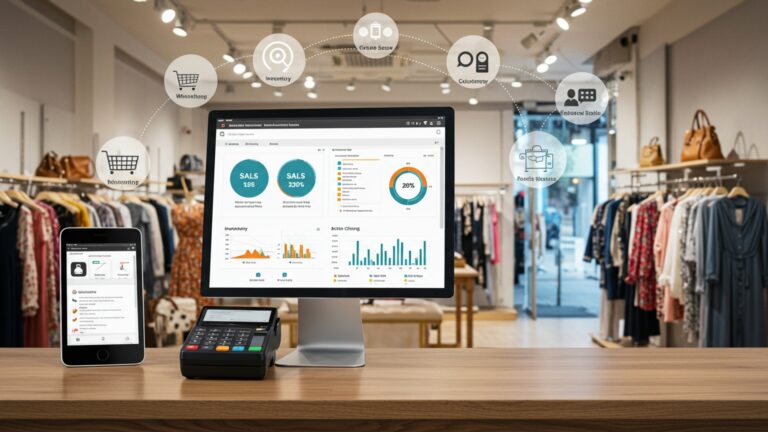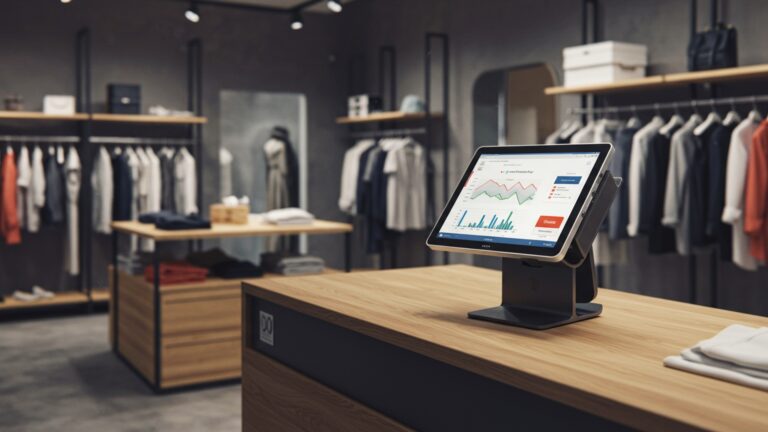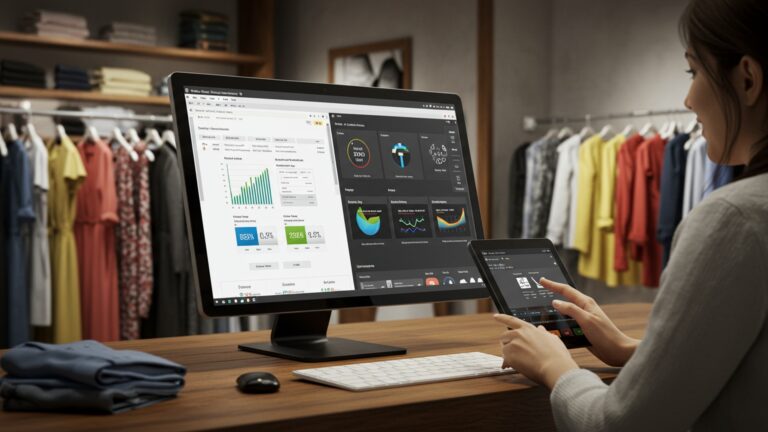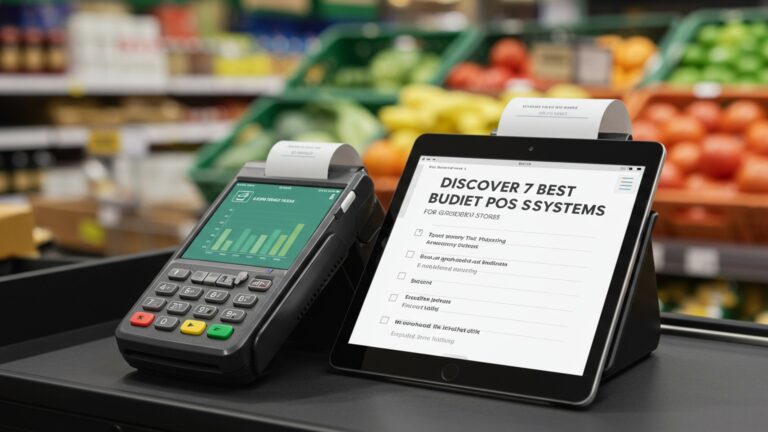Discover the 7 Best POS Software Solutions for Supermarkets to Boost Sales
The modern supermarket faces unprecedented operational complexities, from managing perishable inventory across multiple locations to delivering seamless omnichannel customer experiences. Relying on outdated systems leads to significant revenue leakage through inventory shrinkage, inefficient checkout lines. missed upselling opportunities. Today, the best POS software for supermarkets transcends mere transaction processing, transforming into a strategic asset that leverages real-time analytics for dynamic pricing, optimizes stock levels with AI-driven forecasting. integrates robust loyalty programs to cultivate customer retention. Embracing these advanced, cloud-native solutions is no longer an option but a critical imperative for maximizing profitability and securing a competitive edge in a rapidly evolving retail landscape.
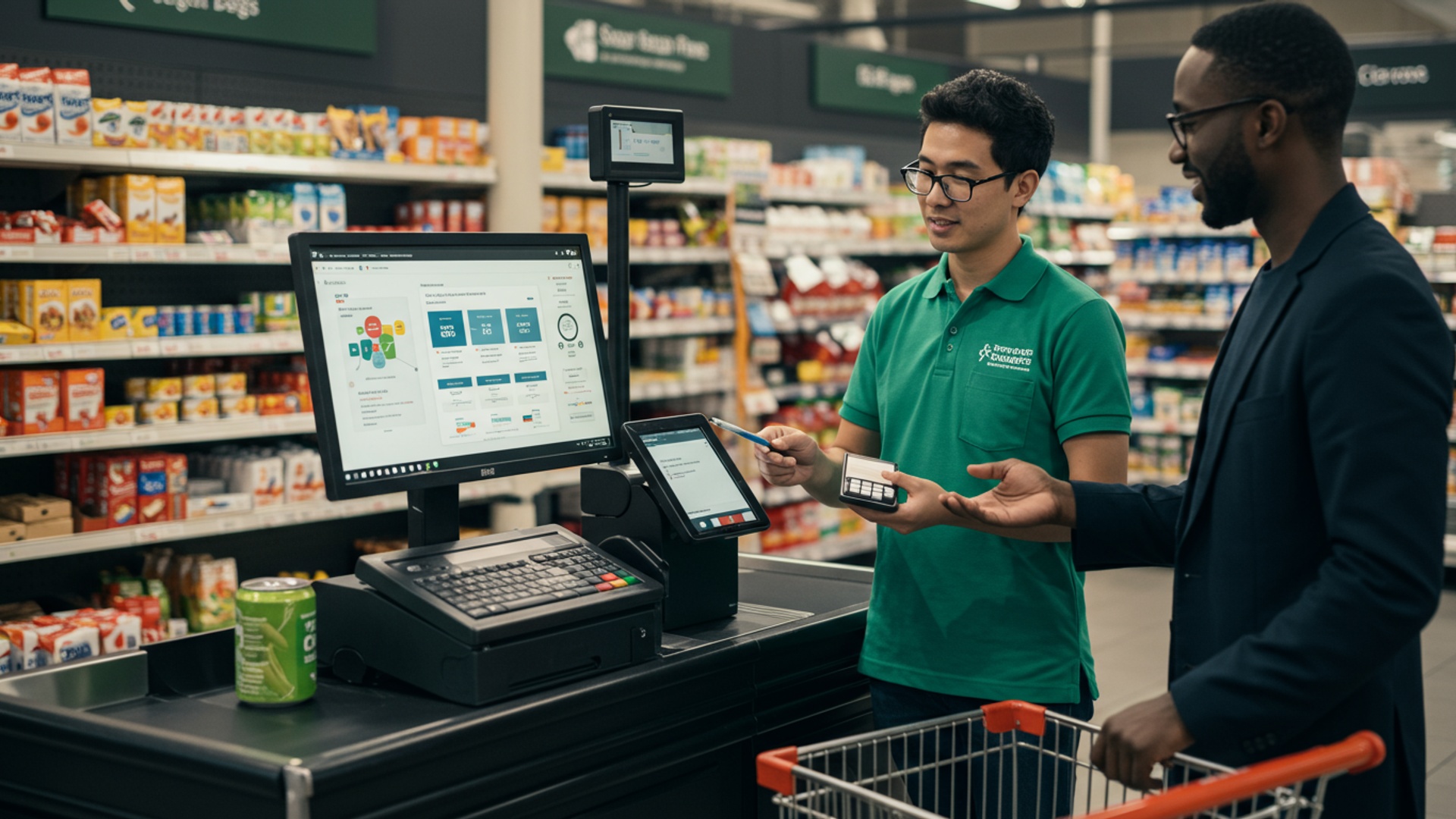
Understanding the Core: What is POS Software for Supermarkets?
In the fast-paced world of retail, particularly for supermarkets, a robust Point of Sale (POS) system is no longer just a cash register; it’s the central nervous system of your operation. At its heart, POS software is a system that processes transactions. its capabilities extend far beyond simply taking payments. For supermarkets, it’s about managing inventory, tracking sales, engaging customers. optimizing staff performance – all critical elements for boosting profitability and efficiency.
Imagine a typical Saturday morning rush at your local supermarket. Customers are lining up, carts overflowing. A high-performing POS system ensures these transactions are processed quickly and accurately, minimizing wait times and improving customer satisfaction. But what happens behind the scenes is even more impactful: every scan, every payment, every discount applied, feeds into a data stream that, when harnessed correctly, provides invaluable insights for strategic decision-making. This is why choosing the best POS software for supermarkets is such a pivotal decision for any grocery business aiming for growth.
Key terms to comprehend:
- Point of Sale (POS)
- Cloud-based POS
- On-premise POS
- API Integration
- Omnichannel
- PCI Compliance
The place where a retail transaction is completed. The software facilitates this process.
Software hosted on remote servers and accessed via the internet. Offers flexibility, scalability. automatic updates.
Software installed directly on your local hardware. Requires local server maintenance but offers more control over data.
Application Programming Interface that allows different software systems (e. g. , POS and accounting) to communicate and share data.
A sales and marketing approach that provides customers with a seamless shopping experience whether they’re shopping online from a desktop or mobile device, by telephone, or in a brick-and-mortar store.
Payment Card Industry Data Security Standard, a set of security standards designed to ensure that all companies that accept, process, store or transmit credit card details maintain a secure environment.
Essential Features Your Supermarket POS Must Have
To truly boost sales and streamline operations, a supermarket POS system needs to go beyond basic transaction processing. Here are the non-negotiable features that define the best POS software for supermarkets:
- Robust Inventory Management
- Fast and Accurate Checkout
- Customer Relationship Management (CRM) & Loyalty Programs
- Employee Management
- Comprehensive Reporting & Analytics
- Vendor Management
- Scalability and Integration Capabilities
- Multi-Store Management
- Loss Prevention Features
Supermarkets deal with thousands of SKUs, including perishable goods. Your POS must track inventory levels in real-time, manage stock across multiple departments (produce, dairy, meat, dry goods), handle vendor orders, receive goods. automate reordering to prevent stockouts and reduce waste. Features like batch tracking, expiry date management. inter-store transfers are crucial.
Speed is paramount. The system should offer quick item lookup, barcode scanning, weight scale integration. efficient tender processing. Support for various payment methods (credit/debit, mobile payments, EBT, gift cards) is essential for customer convenience.
Build lasting relationships by tracking customer purchase history, offering personalized discounts. managing loyalty programs. This allows for targeted promotions, increasing customer retention and average transaction value.
Track employee hours, manage shifts, monitor sales performance. assign access permissions. This helps optimize labor costs and identify top performers.
Gain deep insights into sales trends, peak hours, popular products. employee performance. Customizable reports empower you to make data-driven decisions on pricing, promotions. staffing.
Streamline communication with suppliers, manage purchase orders, track deliveries. maintain a clear record of vendor performance.
As your supermarket grows, your POS should grow with you. It needs to easily integrate with other essential software like accounting systems (e. g. , QuickBooks, Xero), e-commerce platforms. specialized deli/butcher scales or labeling systems.
If you operate more than one location, the POS must offer centralized control over inventory, pricing. reporting across all your stores.
Tools to prevent shrink, such as detailed transaction logs, void/refund tracking. user permission controls, are vital.
The 7 Best POS Software Solutions for Supermarkets to Boost Sales
Choosing the right POS system can be a game-changer. Here’s a look at some of the leading solutions tailored for supermarkets, offering a range of features to suit different business sizes and specific needs. We’ve focused on systems known for their robust inventory, checkout speed. scalability – hallmarks of the best POS software for supermarkets.
1. Lightspeed Retail
- Key Features
- Pros
- Excellent inventory control, ideal for diverse product ranges.
- User-friendly interface, quick staff training.
- Strong reporting and analytics for informed decision-making.
- Scalable for single or multiple locations.
- Integrated e-commerce platform for online sales.
- Cons
- Can be more expensive than basic POS solutions.
- Some advanced integrations might require higher-tier plans.
- Ideal Use Case
Lightspeed Retail is a powerful, cloud-based POS system renowned for its comprehensive inventory management, advanced reporting. seamless e-commerce integration. For supermarkets, its ability to handle thousands of SKUs, manage product variations (e. g. , different weights of the same item). integrate with scale systems makes it highly effective. It offers robust employee management and customer loyalty features.
Mid to large-sized supermarkets and specialty grocery stores looking for a feature-rich system with strong inventory management and omnichannel capabilities.
2. Square for Retail
- Key Features
- Pros
- Extremely easy to set up and use.
- Integrated payment processing with competitive rates.
- Affordable hardware options.
- Good for managing basic inventory and customer data.
- Strong app marketplace for extended functionalities.
- Cons
- Might lack some of the deeper, specialized supermarket features (e. g. , complex batch tracking) found in more enterprise-focused solutions.
- Reporting can be less granular compared to top-tier systems.
- Ideal Use Case
Square for Retail builds upon Square’s popular payment processing with specific retail features. It offers intuitive inventory tracking, multi-location management, customer directories. employee management. While often seen in smaller retail, its continuous enhancements make it viable for growing supermarkets, particularly those prioritizing ease of use and integrated payment processing.
Small to medium-sized supermarkets, organic grocery stores, or specialty food shops that prioritize ease of use, integrated payments. a straightforward setup.
3. Revel Systems
- Key Features
- Pros
- Highly customizable and scalable.
- Real-time data synchronization across locations.
- Strong security features and offline mode capabilities.
- Excellent for multi-department and multi-location management.
- Open API for extensive integrations.
- Cons
- Higher upfront costs for hardware and implementation.
- Can have a steeper learning curve due to its extensive features.
- Ideal Use Case
Revel Systems is an iPad-based POS known for its robust features and flexibility, making it suitable for high-volume environments. It offers advanced inventory management with ingredient-level tracking (useful for in-store delis/bakeries), extensive reporting, real-time sales data. powerful CRM. Its open API allows for deep customization and integration with various third-party applications.
Growing and established supermarkets, particularly those with in-store delis, bakeries, or cafes, requiring deep customization and robust, enterprise-level features.
4. NCR Counterpoint
- Key Features
- Pros
- Extremely robust and reliable for high-volume transactions.
- Deep inventory management specifically tailored for grocery.
- Excellent for multi-store operations.
- Strong customer loyalty and marketing capabilities.
- Comprehensive loss prevention tools.
- Cons
- Can be more complex to set up and manage.
- Requires a significant investment in both software and hardware.
- Primarily an on-premise solution (though cloud options exist), which may require more IT overhead.
- Ideal Use Case
NCR Counterpoint is a long-standing and highly respected POS solution for retail, including a strong focus on grocery. It offers sophisticated inventory control, advanced purchasing, customer loyalty programs. comprehensive reporting. Its ability to handle complex pricing structures, promotions. scale integration makes it a top contender for larger supermarket chains.
Large independent supermarkets, regional grocery chains, or high-volume stores needing a powerful, proven. highly specialized retail management system.
5. IT Retail
- Key Features
- Pros
- Tailored specifically for the grocery industry, addressing unique challenges.
- Excellent scale integration and perishable goods management.
- Robust reporting and analytics for grocery-specific metrics.
- Strong support for EBT and other specialized payment methods.
- Cons
- Interface might feel less modern than some newer cloud-based systems.
- May have a steeper learning curve for new users not familiar with grocery-specific POS.
- Ideal Use Case
As its name suggests, IT Retail is specifically designed for grocery and supermarket businesses. It provides specialized features like scale integration, SNAP/EBT processing, coupon management. robust fresh produce tracking. Its focus on grocery-specific needs ensures that supermarkets can manage their unique inventory and customer requirements effectively.
Independent grocery stores, mid-sized supermarkets. specialty food markets that require a POS system built from the ground up with grocery-specific functionality.
6. LS Retail (Built on Microsoft Dynamics 365)
- Key Features
- Pros
- An extremely powerful and integrated end-to-end solution.
- Unparalleled scalability for large, multi-national supermarket chains.
- Deep integration with Microsoft ecosystem.
- Advanced features for forecasting, planning. supply chain management.
- Cons
- Significant investment in terms of cost and implementation time.
- Complex system that requires specialized IT knowledge to manage.
- Overkill for smaller independent supermarkets.
- Ideal Use Case
LS Retail is a comprehensive, enterprise-grade solution built on Microsoft Dynamics 365, offering an all-in-one platform for retail management. It encompasses POS, ERP (Enterprise Resource Planning), inventory, merchandising, e-commerce. loyalty programs. This makes it exceptionally powerful for large supermarket chains needing a unified system across all business functions.
Large supermarket chains, hypermarkets. international grocery businesses looking for a complete, integrated retail management and ERP solution.
7. Clover
- Key Features
- Pros
- Stylish and user-friendly hardware.
- Extensive app marketplace for customization and added features.
- Reliable payment processing.
- Cloud-based, offering flexibility and remote management.
- Cons
- Core inventory management might not be as deep as specialized supermarket systems without third-party apps.
- App subscriptions can add up, increasing overall cost.
- Less tailored specifically for grocery needs out-of-the-box.
- Ideal Use Case
Clover is a popular, modern POS system known for its sleek hardware and expansive app marketplace. While often seen in restaurants and smaller retail, its flexibility allows it to be adapted for supermarkets, especially with specific apps for inventory, loyalty. reporting. It offers robust payment processing and a user-friendly interface.
Small to mid-sized supermarkets or specialty grocery stores that value modern hardware, ease of use. the flexibility to customize their system through an app ecosystem.
How to Choose the Right POS for Your Supermarket
Selecting the best POS software for supermarkets is a strategic decision that impacts every facet of your business. Here’s a structured approach to ensure you make the right choice:
- Assess Your Specific Needs
- What is your supermarket’s size (number of checkouts, daily transactions, SKUs)?
- Do you have multiple locations?
- What specialized departments do you have (deli, bakery, butcher, produce)?
- What are your current pain points (inventory issues, slow checkout, lack of customer data)?
- What is your budget for software, hardware. ongoing support?
- Prioritize Key Features
- Consider Scalability
- Evaluate Integration Capabilities
- Hardware Compatibility
- Ease of Use and Training
- Vendor Support and Reliability
- Security and Compliance
- Request Demos and Trials
Based on your needs, rank the essential features discussed earlier (inventory, reporting, CRM, employee management). Don’t pay for features you don’t need. ensure critical functionalities are robust.
Your business will hopefully grow. Will the POS system be able to handle increased volume, more locations, or new services (e. g. , online ordering, delivery)?
Ensure the POS can seamlessly integrate with your existing accounting software, e-commerce platform, or specialized hardware (e. g. , deli scales, label printers). An open API is a significant advantage here.
Some systems require proprietary hardware, while others are more flexible. Consider the cost and reliability of the hardware.
A complex system can lead to errors and slow down operations. Opt for a system that is intuitive for your staff and offers good training resources.
What kind of customer support does the vendor offer (24/7, phone, email, chat)? How reliable is their system (uptime)? Look for vendors with a strong track record in the retail or grocery sector.
Ensure the system is PCI compliant and offers robust data security features to protect sensitive customer and business details.
Always take advantage of free trials or personalized demos. This allows you and your team to get hands-on experience before committing.
Here’s a simplified comparison table to help visualize key differentiators:
| POS Solution | Primary Focus | Best For | Key Strength | Potential Con |
|---|---|---|---|---|
| Lightspeed Retail | Comprehensive Retail | Mid to Large Supermarkets | Robust Inventory, E-commerce | Cost for advanced plans |
| Square for Retail | Easy-to-Use Retail | Small to Medium Supermarkets | Simplicity, Integrated Payments | Less specialized grocery features |
| Revel Systems | Flexible & Robust Retail | Growing Supermarkets, Delis | Customization, High Volume | Higher initial investment |
| NCR Counterpoint | Enterprise Retail/Grocery | Large Independent/Chains | Deep Grocery Specifics, Reliability | Complexity, On-premise focus |
| IT Retail | Grocery Specific | Independent Grocery Stores | Grocery-centric features, Scales | Interface modernization |
| LS Retail | Enterprise ERP & Retail | Large Supermarket Chains | All-in-one ERP, Scalability | High cost, complexity |
| Clover | Modern & Flexible Payments | Small to Mid, Tech-Savvy | Hardware, App Marketplace | Core inventory depth |
Maximizing Sales with Your Chosen POS System
Once you’ve implemented the best POS software for supermarkets for your business, the real work begins: leveraging its capabilities to drive sales. Here are actionable strategies:
- Optimize Inventory for Demand
- Implement Targeted Promotions
- Streamline Checkout for Speed
- Launch and Manage Loyalty Programs
- Empower Staff with Data
- Integrate with E-commerce
- review and Adapt
Use your POS’s sales data to identify best-selling products and peak sales times. Adjust ordering to ensure popular items are always in stock. reduce inventory for slow movers to prevent spoilage and tie up capital. For example, if your POS reports a consistent spike in organic produce sales on weekends, you can strategically increase stock and even create attractive displays for those days.
Your POS’s CRM features allow you to track customer purchase history. Use this to create personalized offers. A customer who frequently buys gluten-free products could receive a discount on new gluten-free arrivals. This level of personalization makes customers feel valued and encourages repeat business.
A fast checkout experience is paramount. Train your staff thoroughly on the POS system to minimize transaction times. Ensure barcode scanners, scales. payment terminals are always in top working order. Consider self-checkout options if your POS supports them to further reduce wait times during busy periods.
A well-structured loyalty program can significantly boost customer retention. Use your POS to easily enroll customers, track points. automatically apply rewards. A study by Bond Brand Loyalty found that 73% of consumers are more likely to recommend brands with good loyalty programs.
Give your employees access to relevant POS data (within their permission levels). For instance, department managers can view their sales performance, inventory levels. even customer feedback, enabling them to make better decisions on the floor. A produce manager, seeing real-time sales of berries, can quickly decide to restock or move them to a more prominent display.
If your POS offers e-commerce integration, leverage it to expand your reach. Offer online ordering for pickup or delivery. This omnichannel approach caters to modern consumer habits and opens up new revenue streams. Ensure your online inventory is seamlessly synced with your in-store stock to avoid disappointment.
Regularly review your POS reports. Look for trends, identify opportunities. address weaknesses. Are certain departments underperforming? Is a new product line gaining traction? Use these insights to refine your marketing, merchandising. operational strategies. For instance, if reports show a dip in dairy sales on Tuesdays, you might consider a “Dairy Tuesday” promotion.
By thoughtfully implementing and continuously optimizing your chosen POS system, supermarkets can move beyond simple transaction processing to create a highly efficient, customer-centric. profitable operation.
Written by PromotoAI
promotoai generate content that ranks
Conclusion
Selecting the ideal POS for your supermarket isn’t merely about processing transactions; it’s a strategic investment poised to unlock significant sales growth and operational efficiency. My personal tip? Don’t just look at a system’s features in isolation; envision how it will seamlessly integrate into your daily operations, from real-time inventory updates to accelerating checkout lines during peak hours. Always consider the system’s scalability for future expansion, a critical and often overlooked aspect for growing businesses. The right POS, like the top solutions we’ve explored, transforms raw sales data into actionable insights, revealing crucial customer buying habits. Imagine knowing that “Mrs. Sharma consistently buys organic produce on Tuesdays,” enabling you to craft targeted promotions that truly resonate. This focus on advanced data analytics and robust customer loyalty programs is a key current trend directly impacting your bottom line. Moreover, prioritize systems offering seamless integration with your e-commerce platform and robust contactless payment options, reflecting recent developments in consumer preferences and the necessity for enhanced security. Ultimately, the goal is to empower your supermarket to not only meet but consistently exceed customer expectations, turning every transaction into an opportunity for engagement and long-term loyalty. Take this knowledge, evaluate your options diligently. choose a POS solution that will truly propel your business forward, ensuring a robust, profitable. future-ready supermarket.
More Articles
Discover the Top 7 POS Software for Grocery Stores in India
Choose Wisely 10 Best POS Software for Your Grocery Store in India
Learn How 10 Mobile POS Billing Apps Can Boost Grocery Efficiency
7 Best POS Software Options to Boost Your Business Efficiency
Discover the Top 7 Android POS Software Solutions for Your Business Needs
Written by PromotoAI
promotoai generate content that ranks
FAQs
What makes a POS system so crucial for supermarket sales?
A good POS system streamlines checkout, manages inventory accurately, helps with pricing. provides valuable sales data. All these factors contribute to a smoother customer experience and informed decisions that can directly increase sales.
How can specific POS features actually help my supermarket boost its revenue?
Features like loyalty programs, integrated promotions, speedy checkout. real-time inventory tracking directly impact sales. Loyalty programs encourage repeat business, promotions drive immediate purchases, fast checkout reduces lost sales from long queues. accurate inventory prevents stockouts of popular items.
What are some key things I should look for when choosing the best POS software for my grocery store?
You’ll want features like robust inventory management, seamless integration with scales and scanners, customer loyalty programs, detailed reporting, secure payment processing. ease of use for your staff. Scalability and reliable support are also super vital.
Is it difficult to integrate a new POS system into an existing supermarket setup?
While there’s always an implementation phase, many modern POS solutions are designed for relatively smooth integration. The best ones offer good support, training. compatibility with existing hardware like barcode scanners and payment terminals, making the transition less disruptive.
Besides just selling more, what other benefits can a powerful POS system bring to my supermarket?
Beyond boosting sales, a strong POS system can significantly improve operational efficiency. Think better waste reduction through precise inventory, simplified staff management with time tracking, enhanced customer service through purchase history. clearer financial insights for better business planning.
Do these ‘best’ POS solutions cater to both small independent grocery stores and larger supermarket chains?
Absolutely! Many top POS solutions offer scalable options. They can be tailored to fit the needs and budget of a smaller neighborhood market with basic features, or scaled up with advanced functionalities to handle the complex operations of a multi-store supermarket chain.
How does real-time data from a POS system help me make smarter business decisions for my supermarket?
Real-time data shows you exactly what’s selling, when. to whom. This insight helps you optimize product placement, identify peak shopping hours for staffing, tailor promotions to customer preferences. quickly reorder popular items, all leading to more profitable choices.

